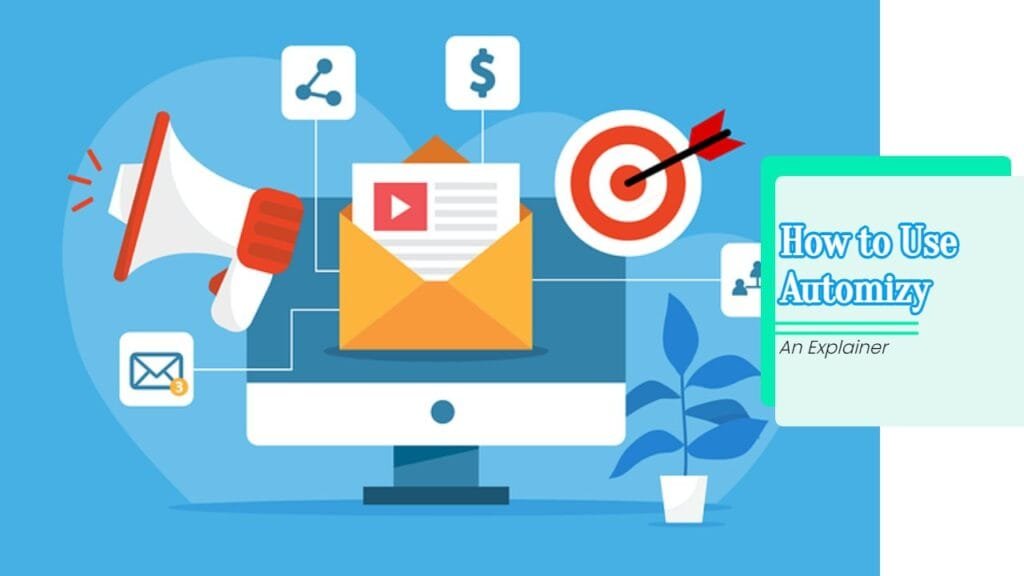Understanding Customer Experience Management
Definition of CEM
Customer Experience Management (CEM) is like having a secret recipe for making your brand unforgettable. It’s all about crafting those special moments that make customers go, “Wow!” when they interact with your brand. Think of it as a mix of art and science, where your goal is to not just meet but blow away those customer expectations. TTEC explains CEM as a way to boost how satisfied, loyal, and vocal customers are about your brand by creating memorable experiences. This approach isn’t just about doing the bare minimum—it’s about building meaningful, long-lasting relationships that go way beyond the hello and goodbye.
To really get the hang of CEM, you have to see it as more than just offering good service. It’s the whole adventure a customer embarks on with your brand, from the first time they hear about you to when they’re telling their friends how awesome you are. Each part of this adventure needs to be just right to make them smile.
Importance of CEM Strategy
Having a game plan for Customer Experience Management is like having a map in a treasure hunt. Without it, you’re just wandering around. Companies without a good CEM strategy often miss the mark on making customers consistently happy. It’s like trying to cook without a recipe—the result can be bland or even a total flop! You need to be listening closely to what customers want and be ready to change things up as their preferences evolve (TTEC).
Getting a CEM strategy right means enjoying a bunch of rewards:
| Benefits of CEM Strategy | Description |
|---|---|
| Happier Customers | When experiences click with what customers are looking for, happiness levels shoot up. |
| More Loyal Fans | Happy customers will keep coming back for more, sticking to your brand like glue. |
| Natural Brand Promoters | Those satisfied folks will spread the word without you even asking. |
| Fewer Leaving Clients | A smart CEM approach helps keep churners at bay. |
| Better Understanding | Gathering feedback gives you the inside scoop on what makes customers tick. |
So, nailing a CEM strategy is like planting seeds for a garden of loyal customers who spread the good word. It’s all about handling customer experiences in a way that turns clients into your biggest fans (TTEC). For tips on spicing up specific customer journey elements, take a look at resources on customer journey mapping and customer experience touchpoints.
Implementing Customer Relationship Management
Pulling Customer Relationship Management (CRM) into my business strategy has flipped the switch on how I’ve managed customer experiences. With smart CRM tactics, I’ve gotten a real grip on what my customers like and dislike, making them happier and sticking around longer.
Effective CRM Strategies
To get the best from CRM, I pinned down a few solid strategies:
Sorting Customer Data: First, I made sure every bit of customer info and interaction was neatly sorted. This setup helped me better understand what makes my customers tick, so I could predict their needs before they even asked.
Spicing Up Communication: With the treasure trove of data I had, I personalized every chat to fit each customer like a glove. This little tweak made them feel more valued and heard.
Hitting the Auto Button: I went all-in on automation for jobs like email marketing and keeping tabs on sales. It saved loads of time for me and my crew and let us focus on actually connecting with our customers.
Feedback Channel: Setting up a solid feedback loop was key. I regularly asked customers how we were doing and used their input to keep tweaking our services to match their suggestions.
| Strategy | Description |
|---|---|
| Sorting Customer Data | Neatly managing customer info and interactions. |
| Spicing Up Communication | Customizing messages to fit customer profiles and behaviors. |
| Hitting the Auto Button | Using tech to speed up and simplify workflows. |
| Feedback Channel | Gathering and acting on customer suggestions. |
Benefits of CRM
The perks of having a well-oiled CRM setup are huge. It changed my business in a few big ways:
Getting More Done: CRM helps tidy up and streamline sales efforts, marketing plans, and data analysis, making everything run like clockwork (Forbes).
Knowing Customers Inside-Out: With all the data organized neatly, I get a bird’s-eye view of what customers bought before and what they might need, giving me a leg up on creating deals and products they actually want (Forbes).
Happy Customers: Great service makes my team hit it out of the park, boosting customer contentment and loyalty, which keeps the cash registers ringing (Desk365).
Boosting the Support Crew: Giving my squad the right tools means they can handle customer questions like pros, upping satisfaction and loyalty in the process (Desk365).
By weaving these CRM tactics into my routine and knowing what they bring to the table, I’ve lined up my strategy to ramp up customer happiness and make my business soar. For more tips on sprucing up customer relations, check out customer journey mapping and customer experience strategy.
Enhancing Customer Service Management
When I first started diving into the world of customer experience management, it didn’t take long to realize just how crucial top-notch customer service management (CSM) is. It’s like the secret sauce businesses need to truly connect with their clients and leave them feeling valued and heard. And boy, can technology give it a serious boost!
Role of Technology in CSM
Tech these days is like the trusty sidekick in a superhero flick. It makes customer service not just easier, but way more effective. Sure, human touch is still king, but with tech? Man, you can get things running smoother than a greased-up weasel. Here’s some tech that’s changing the game in CSM:
| Technology Type | Why It Rocks |
|---|---|
| CRM Software | Makes talking to customers a breeze and cuts through the chaos, ramping up satisfaction and keeping everyone happy (Forbes). |
| Chatbots | Talk about instant gratification! They’re there 24/7, ready to answer questions faster than you can say “hold, please.” |
| Customer Feedback Tools | Spying customer thoughts and crafting better service plans like a boss. |
| Tracking Systems | Keeps tabs on customer interactions, making sure promises are kept and balls aren’t dropped. |
With these tech tools, businesses can be everywhere their customers are, whether on a website, social media, or even good old email. It’s the virtual version of being in a hundred places at once, ensuring top-notch service wherever the customer finds you.
Benefits of Effective CSM
Nailing effective customer service management isn’t just about checking boxes. It’s like feeding a goose that lays golden eggs—there’s a whole treasure trove of benefits up for grabs. Here’s what I’ve found:
| Benefit | Why You Want It |
|---|---|
| Enhanced Customer Loyalty | Keep ’em coming back! A strong bond means repeat gigs and folks singing your praises. |
| Increased Customer Retention | Happy customers stick around, saving you the headache of hunting for newbies. |
| Higher Customer Lifetime Value | Loyal folks tend to spend more over time, so it’s a win-win (Userpilot). |
| Improved Team Efficiency | When your crew’s got the right stuff at their fingertips, problems get solved faster than you can say “fixed!” |
To really knock it out of the park, mixing in customer feedback, boosting agent powers, and laying down solid training are key. Businesses that roll with these strategies and tech will create killer service moments that wow customers and build a success story that lasts. Curious about mapping out the customer journey or digging deeper into their interactions? Check out customer journey mapping for expert-level insights.
Utilizing Customer Feedback Analysis
Importance of Feedback Analysis
In my journey of understanding customer experience, one thing that stood out was how crucial it is to dive into customer feedback to keep them happy campers. Listening to what folks say about every stage, from their initial shopping to their overall vibe with the brand, can make a world of difference in how they stick around and chat about your business.
Getting to the heart of feedback can point out where things are going a bit off track and need some TLC. For example, places like Gousto keep a sharp eye on what’s bubbling during those support chats to grasp why folks might be getting huffy. Fixing those gripes smooths the path for better customer vibes and cuts down on losing money over things being returned or given a pass.
Baking feedback into the daily grind of decision-making keeps a business ticking and evolving. Giants like Amazon and Apple owe a chunk of their sparkle to tuning in to what people say and pivoting their moves accordingly (Sentisum).
Tools for Effective Analysis
Sifting through customer feedback with the right tools and tricks can turn all those words into golden intel. The magic lies in turning those casual comments into solid numbers you can trust. Techniques like sentiment analysis, keyword pinpoints, and topic grouping break feedback down to show where you can score some wins.
Tech-savvy businesses leaning on fancy AI-tools are acing the analysis game a lot quicker. With the help of Natural Language Processing (NLP) and machine learning, it’s easier to get a fuller picture without wasting time. It’s sort of like having an extra set of super-smart eyes on the lookout (Qualaroo Blog).
| Tool Type | Features |
|---|---|
| Sentiment Analysis | Checks the mood and feelings in the feedback |
| Keyword Analysis | Spots words used often to find out what’s hot or not |
| Topic Analysis | Clumps feedback into types for better clarity |
| AI-powered Analytics | Automates the feedback grind with NLP and machine wizardry |
Plugging these tools into your feedback strategy can seriously up your game when thinking about the customer path. Continuously mining and applying those insights means building a smoother, more in-tune experience. For a deeper peek into customer touchpoints, you might want to check out more on customer experience metrics and customer experience analytics, both of which are pretty crucial for staying on top of customer interactions and improving their experience the smart way.
Impact of Customer Experience on Business
Customer Experience’s Influence on Loyalty
From my adventures in the world of customer experience (CX) management, I’ve seen firsthand how much of an effect a good experience has on customer loyalty. Apparently, about two-thirds of loyalty to any brand is hinged on how customers feel when interacting with it. This just screams out the need for businesses everywhere to polish up their customer experience game.
Companies shining with top-notch customer service are bound to see a surge in loyalty. A whopping 93% of folks out there are more likely to buy again from places that roll out the red carpet when it comes to service. Stacking up a loyal squad of customers is crucial, especially since keeping the customers you have often beats the pants off trying to snare new ones in terms of cost.
| Key Stats | Impact on Loyalty |
|---|---|
| Over 66% | Customer loyalty driven by positive experience |
| 93% | Repeat purchases influenced by excellent service |
Business Growth through Customer Experience
Cracking the code on customer experience is like finding the golden ticket to business growth. From what I’ve learned, zeroing in on customer happiness ties right into keeping more customers around and easing the load of bringing in newbies. One major perk of killer customer service is retaining customers, and turning a blind eye to it can cost businesses those golden sales opportunities (Desk365).
Diving into the realm of customer experience management is a biggie. When businesses put the spotlight on CX, they build stronger bonds with their audience while ramping up the value each customer brings over their lifetime. A smart CRM helps cement these relationships, leading to boosted engagement and loyalty (Userpilot).
| Business Impact | Result |
|---|---|
| Improved Customer Retention | Lower acquisition costs |
| Enhanced Customer Relationships | Higher engagement and loyalty |
| Increased Customer Lifetime Value | Greater profitability |
When plotting out improvements in customer experience, I often turn to resources like customer journey mapping and tracking customer experience metrics. Crafting strategies that put a warm spotlight on the customer journey can land a business not just customer abidance, but also sustainable growth. Getting to grips with and leveling up the customer experience is essential to stay in the race today, and it will always sit atop my list of priorities.
Strategies for Effective Customer Experience Management
I’m no stranger to the wild ride that is mastering Customer Experience Management (CEM). Through trials, errors, and aha moments, I’ve found that crafting a top-notch strategy boils down to a few must-haves and getting your whole crew on board with a customer-first mindset.
Key Components of CEM Strategy
An ace CEM strategy is like a well-oiled machine with various moving parts. From my own adventures and some good old research, here’s the hit list you can’t skip if you want to knock it out of the park:
| Key Component | What’s it all about? |
|---|---|
| Customer Journey Mapping | It’s all about seeing things through your customer’s eyes from the first “Hey there” to “See you later.” This tells you where you’re doing fab and where you could step it up. Need more deets? Check out this page. |
| Customer Feedback Analysis | Keep your ear to the ground by collecting and dissecting what’s said about you. It’s your cheat sheet to know what’s working and what’s not. More on this in our feedback analysis section. |
| Setting Clear Objectives | It’s the ol’ set and shoot method—define what success looks like and keep your eyes on the prize. |
| Employee Engagement | Get everyone in the know of how they play a part in making customers smile. |
| Tech and Data Power | Use tech gear like data heaps to steer your decisions and sprinkle in some personal touches. Want more? Peek at our tech section. |
| Never Rest on Your Laurels | It’s all about tweaking here and there based on what you learn and the feedback you get. Stay nimble and open to change. |
| Going All-In on Customer Focus | Make customer happiness the heartbeat of everything you do. |
Nail these down, and you’ll not just keep your customers smug and happy, but you’ll see your business numbers dance too. The wise folks over at Medallia nod in agreement.
Customer-Centric Culture
The secret sauce to ruling CEM land lies in spinning an entire culture around your prized possession: the customer. Here’s what that looks like:
Good Ol’ Shared Values: Every team member should be on the same page that delivering exceptional customer service is everyone’s cup of tea. This syncs up the troops.
Train Your Warriors: Fire up your folks with customer experience training. Give them tools and smarts to charm the socks off your customers.
Feedback is King: Make it a team sport to join in on customer feedback chatter. This insight fuels sharper decisions and strategies.
Teamwork Makes the Dream Work: Join forces across departments for an all-round handle on making customers happy (HubSpot spells it out nicely).
Give Credit Where It’s Due: A pat on the back or a shout-out for going the extra mile in the CX game boosts morale and loyalty.
When you let the customer run the show, not only do you dodge losing them after one facepalm moment—54% would bail after just one bad taste—but you pave the way for them to stick around and help you rake in the dough (HubSpot). By lining up these moves, I’ve seen firsthand how firms can hit the bullseye in customer experience management, paving the way for long-lasting triumphs.
Driving Success with Customer Experience
Role of Customer Success Teams
As I wade through customer experience management, I’ve seen firsthand that customer success teams are like the secret sauce to making everything run smoothly. They aren’t just sitting around waiting for things to go wrong. No, they get ahead of the game, tackling potential hiccups before they can even pop up. Those regular post-purchase check-ins? Absolute magic for keeping folks around and turning them into loyal fans.
What these teams are really good at is making sure customers stick around for the long haul. By truly getting to know what makes customers tick, they can whip up solutions that make the whole experience better. Check out how customer success teams bring the magic:
| Key Area | Impact of Customer Success Teams |
|---|---|
| Keeping Customers Around | Boosts loyalty, lowers churn |
| Making Connections | Builds strong bonds with customers |
| Fix-it-First Attitude | Nips issues in the bud |
| Feedback Fun | Collects insights for constant tweaking |
Providing Self-Service Solutions
Giving folks self-service options is like handing them the keys to the information castle. I figured out that tools like knowledge bases and chatty chatbots let people find answers quicker than ever. This independence means my crew can focus on the big stuff that really needs that personal touch (HubSpot).
Here’s how self-service tools pack a punch:
| Self-Service Solution | Benefits |
|---|---|
| Knowledge Base | Slashes wait times; it’s there all day, every day |
| Chatbots | Quick responses; tackles usual queries like a boss |
| FAQs | Tackles the age-old questions like a pro |
| Community Forums | Get support from fellow users; jazzes up customer engagement |
Weaving these self-service options into the customer experience plan really amps up satisfaction and helps customers feel empowered, leading to a happier connection with the brand. Keeping these tools fresh and effective is an ongoing mission that pushes success in customer experience further. For more tips on leveling up the overall experience, dive into our guides on improving customer experience and customer experience solutions.
Aligning Organization for Better CX
Crafting a killer customer experience strategy is no solo gig; everyone’s gotta chip in. To jazz things up for your customers, it’s all about grabbing that feedback and plowing some bucks into beefing up the whole experience ordeal.
Collecting and Using Customer Feedback
Lend me your ears! Feedback’s your decoder ring to what customers are really thinking about—from the hoops they jump through to purchase to how they feel rolling with your brand. Now, turning all that chatter into numbers ain’t some witchcraft. You’re looking at tools like sentiment and keyword analysis to snag those key pointers on what needs a fixer-upper.
Here’s the lowdown on getting the scoop:
| How We Get It | What It Does |
|---|---|
| Surveys | Quick-fire questions zeroing in on what hits and what misses. |
| Focus Groups | Roundtable powwows that dig a bit deeper into minds. |
| Social Media Monitoring | Eavesdropping on the buzz on digital streets. |
| Customer Interviews | One-on-one chats to really get what’s up with them. |
Armed with this intel, it’s like you’ve got a GPS showing where to steer your ship to keep folks happy. That’s big time, ’cause back in ’21, 49% split from companies over bad experiences (Qualaroo Blog).
Investing in CX Efforts
Pumping resources into customer experience is a surefire way to keep things fresh and on point. It could mean upping the skills of your crew, tweaking your tech setup, or giving feedback systems a hi-tech makeover. Businesses putting their chips here often find they’re hitting the jackpot.
Check this:
- A quarter of customers are cool with shelling out 10% more if a brand’s got its experience game locked down.
- Tools with fancy AI mojo make scouring feedback less of a chore, freeing up time and cash—for those “aha!” digs (Qualaroo Blog).
Shifting focus onto what customers want means your team gets the hang of putting them first—better service, better loyalty, better all around. Throwing cash at what makes the experience sing, like trailblazing customer experience tech or spot-on customer experience training, means you’re teeing up for long-term wins with folks sticking around.
To wrap it up, getting everyone on the same customer-loving page and dropping coins into upgrading their journey means you’ll see more smiles and success heading your way.




















